|

After a happy Meet & Greet with many
Beechcraft owners on Saturday November 8th, at Bridgeport, TX (KXBP) to
celebrate <$3.00/gallon fuel prices, Ed and Marcia L. continued on their way in
their A36 Bonanza, uneventfully, to Ardmore, OK.
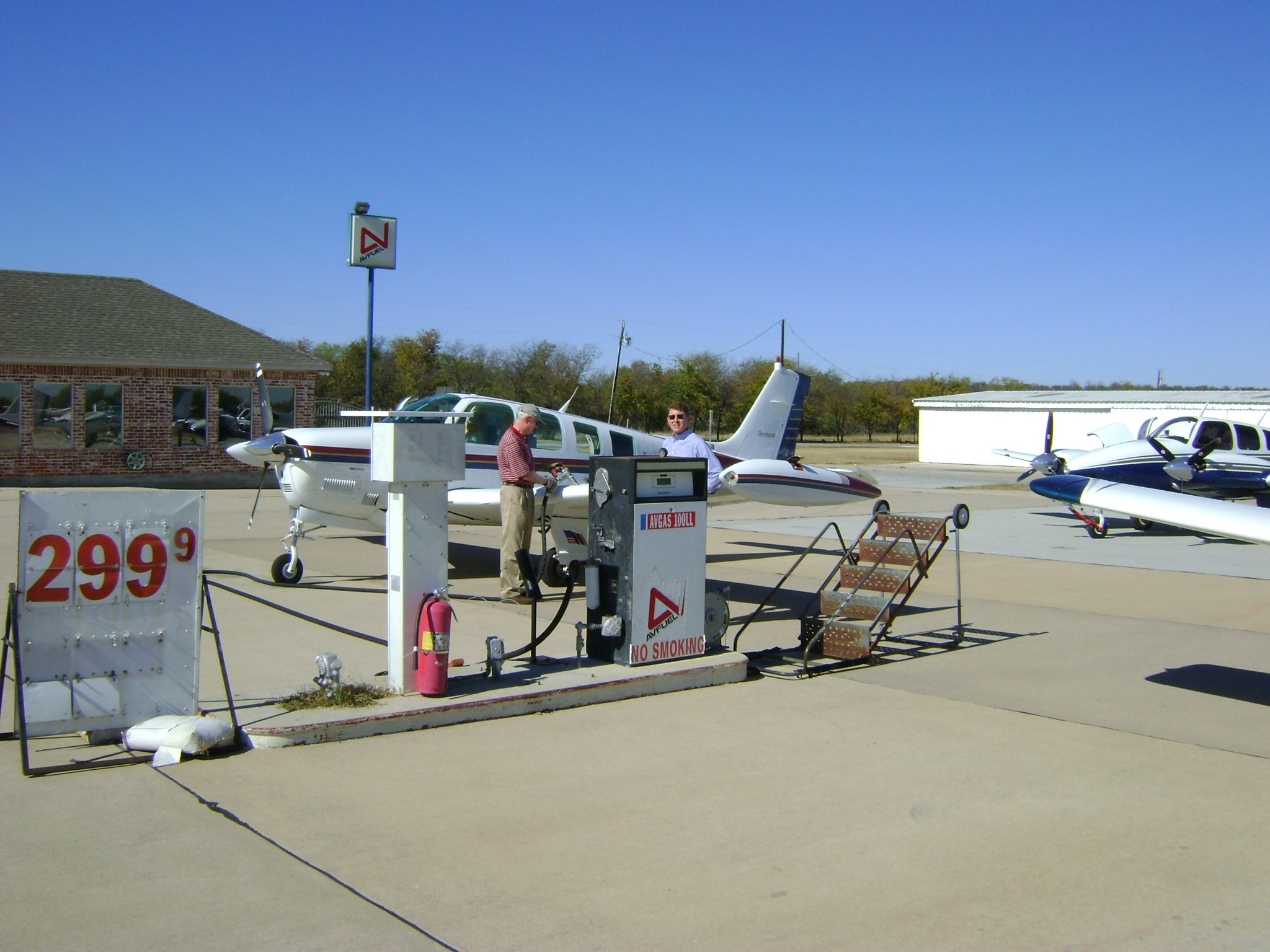
Here's Ed, in the khaki trousers, topping off his bird.
Their return south a few days later was
anything but uneventful.
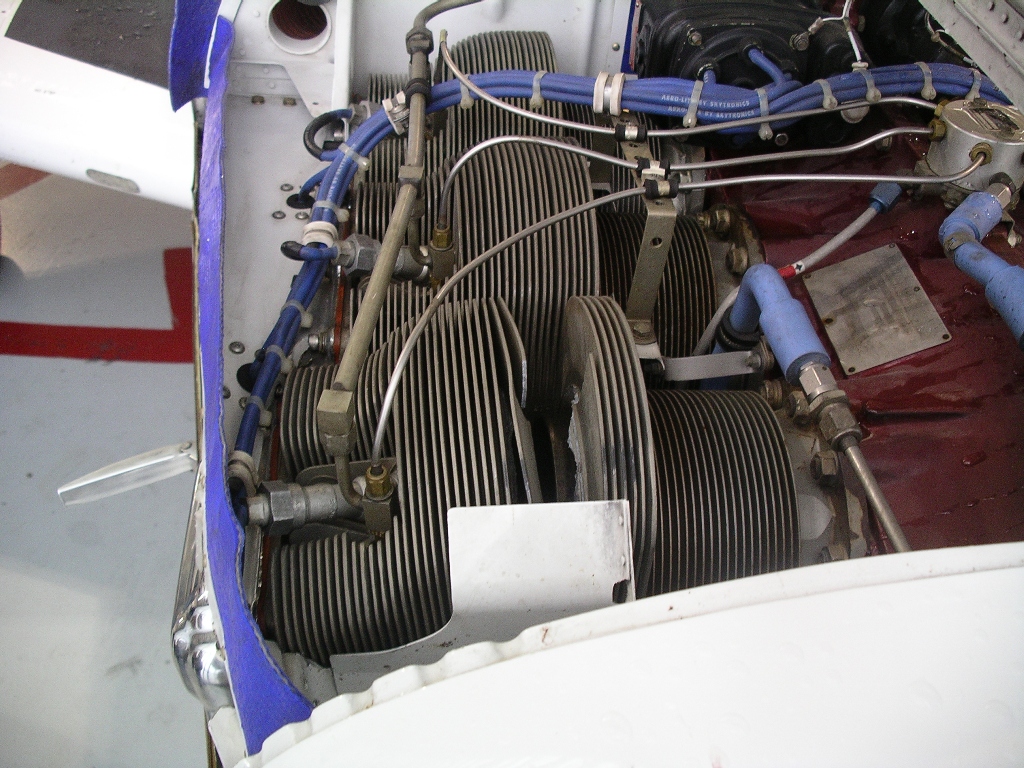
Imagine this happening to one
of your cylinders in-flight! On second thought, let's not!
Here is Ed's account of what happened:
We had the dreaded "uh-oh" Sunday after we departed from
Ardmore, OK, and headed down to the north Dallas area. At 4,500, and at
relatively moderate power, our engine cratered. We later found the number 5
cylinder head blew off, disconnected. There was a "bang", the engine immediately
ran rough, and the JPI confirmed power loss in the cylinder. Of course, while in
the air, we had no idea what had happened, but I sort of reckoned it was a
cylinder coming apart. We have ECi cylinders. There's an AD out on the subject,
though it doesn't appear to cover our specific cylinders.
Marcia pushed the GPS "nearest" button to locate the nearest
airport, which fortunately turned out to be Gainesville, TX (GLE). We were on
Center frequency, declared an "emergency" and stayed with them for a couple
minutes until we identified GLE, then we switched to GLE Unicom, again declared
an emergency asking everyone to stay clear because we were coming in with only
limited power. The engine was still running, but we had plenty of altitude and
we didn't want to push the power issue. There was a clunking noise.
Our altitude was just fine for the 6.5 nm coast to GLE, and we
entered onto base, then turned final, and landed quite normally. The engine
provided taxi power to get us to the tie down. We shut it down normally.
Once on the ground, we opened the cowl to find #5 cracked all
the way around about 5 fins up from the bottom of the louvers. It had separated
by about a third of an inch.
Rick, the airport guy at GLE, was very nice, and a number of
other pilots who had heard our call, landed to check on us. There wasn't much to
do on Sunday, so we made plans to spend the night and get into it Monday
morning.
I did call George Braly on his cell after we landed. George as
usual was calming and reassuring. We knew from the moment we saw the injury that
we'd turn the final repair over to Tornado Alley, George and Tim Roehl.
The next day, we visited Bill Morrow at Tomlinson Aviation at
GLE and his maintenance supervisor Tim Fellegy. Tomlinson is a large and
impressive shop on the field. They pulled the plane inside and everyone gathered
around as we opened the cowl again for show and tell. Upon seeing the rupture, 3
of the guys said kinda in unison, "do you have ECi cylinders?" We confirmed that
we did.
Tomlinson removed the broken cylinder. The good news is that
the rings were still attached to the piston, and piston and rings do not appear
damaged. We don't believe any metal invaded the remainder of the engine.
Tomlinson will be checking closely for that.
Tim Roehl coordinated with Tomlinson, volunteered to ship a
serviceable cylinder and parts to Tomlinson which arrived today. Once it's
installed, and the engine is serviceable, TAT will ferry N29959 to Ada where it
will undergo a top overall, installing new cylinders the TAT way. They'll be
Millenniums, new design and manufacture. We've had issues with the old cylinders
since they were installed by Ultimate in 2001, and we've decided to put the
issue behind us once and for all.
We're very impressed with the helpful manner of the folks at
GLE, at Tomlinson and Tornado Alley. We should have N29959 back in the air in
about 2 weeks. Our pocketbook will be a bit lighter, but we are fortunate to
have been forced down at Gainesville, TX, where there was a fine shop like
Tomlinson, to have no further damage or injury, and to have our great friends in
Ada resolve this matter.
Ed reports that these cylinders were not the
subject of any current AD on ECi cylinders. The mechanics involved in the
cylinder removal will be making appropriate agency reports on this cylinder
failure.
Here is another ECi cylinder
failure from a Canadian crash of an O-360 equipped experimental Glastar
aircraft.

TSB Final Report
A09P0156—Engine Power Loss-Forced Landing
On June 12, 2009, an amateur-built Glastar was on a recreational
flight from Yellowknife, N.W.T., to Kelowna, B.C., with two pilots on
board. At approximately 14:01 Pacific Daylight Time (PDT), shortly after
passing Chetwynd, B.C., a severe powerplant vibration and loss of power
was experienced. The engine power was reduced to 1 000 RPM and a forced
landing into a field was attempted. On short final, the aircraft struck
a power line and veered off course to the right, where it struck trees
and rising terrain. The pilot in the left seat received non-life
threatening injuries. The pilot in the right seat was fatally injured.
There was no emergency locator transmitter (ELT) signal and no fire. The
switch on the ELT was found in the OFF position.
Examination of the wreckage revealed that the No. 2 cylinder head had
separated from the base (see Photo 1) and the crankshaft was
severed at the propeller flange. The engine had 212 hr total time since
new (TTSN) when the failure occurred.
Read the whole article
HERE
NEWS FLASH:
27 February 2012 NTSB Safety Recommendation on ECi Cylinders
HERE
Here is another ECi cylinder
failure in March 2015 from Bonanza owner Stephen B., of California, in an
IO550 TN aircraft.
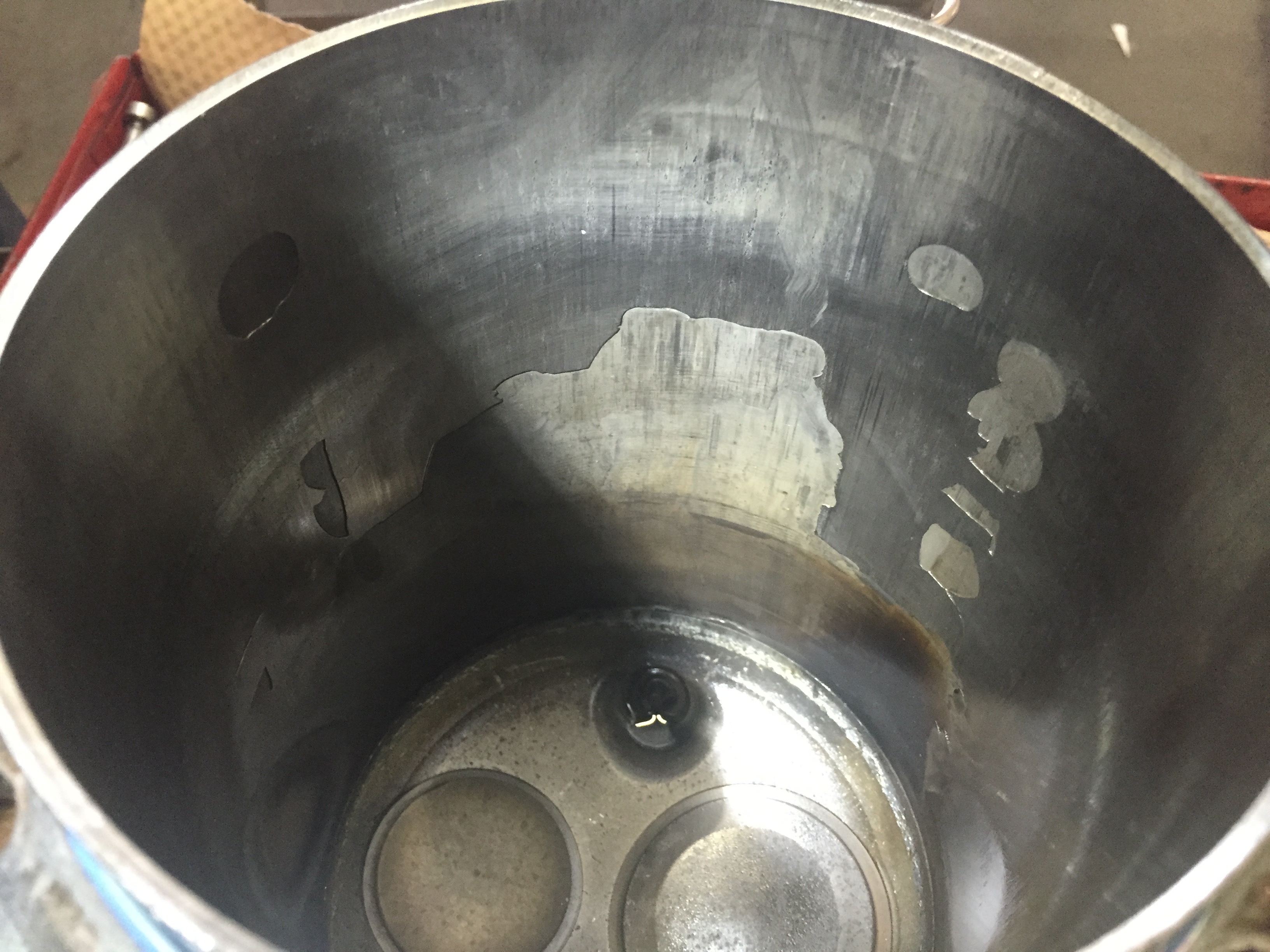
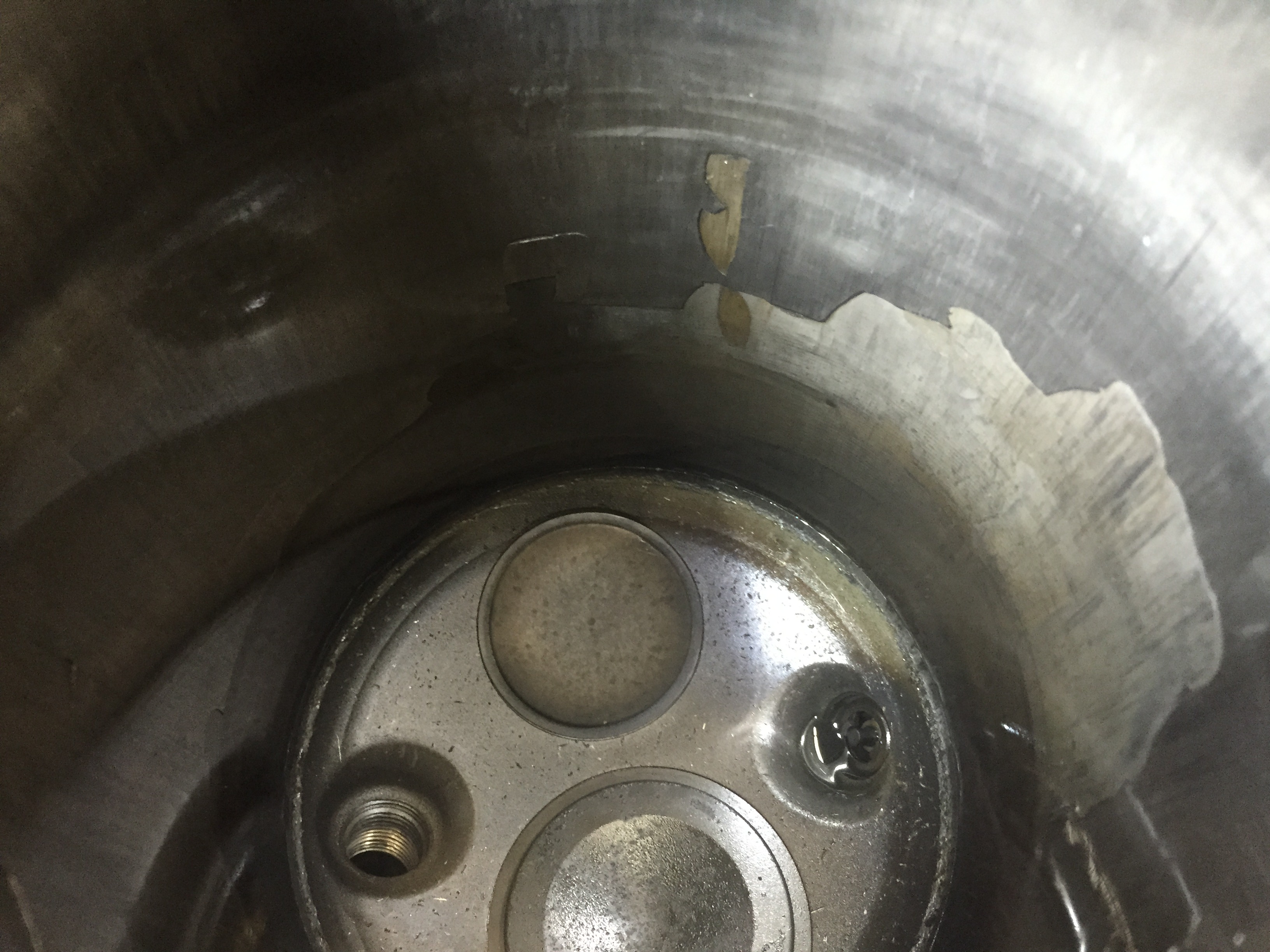
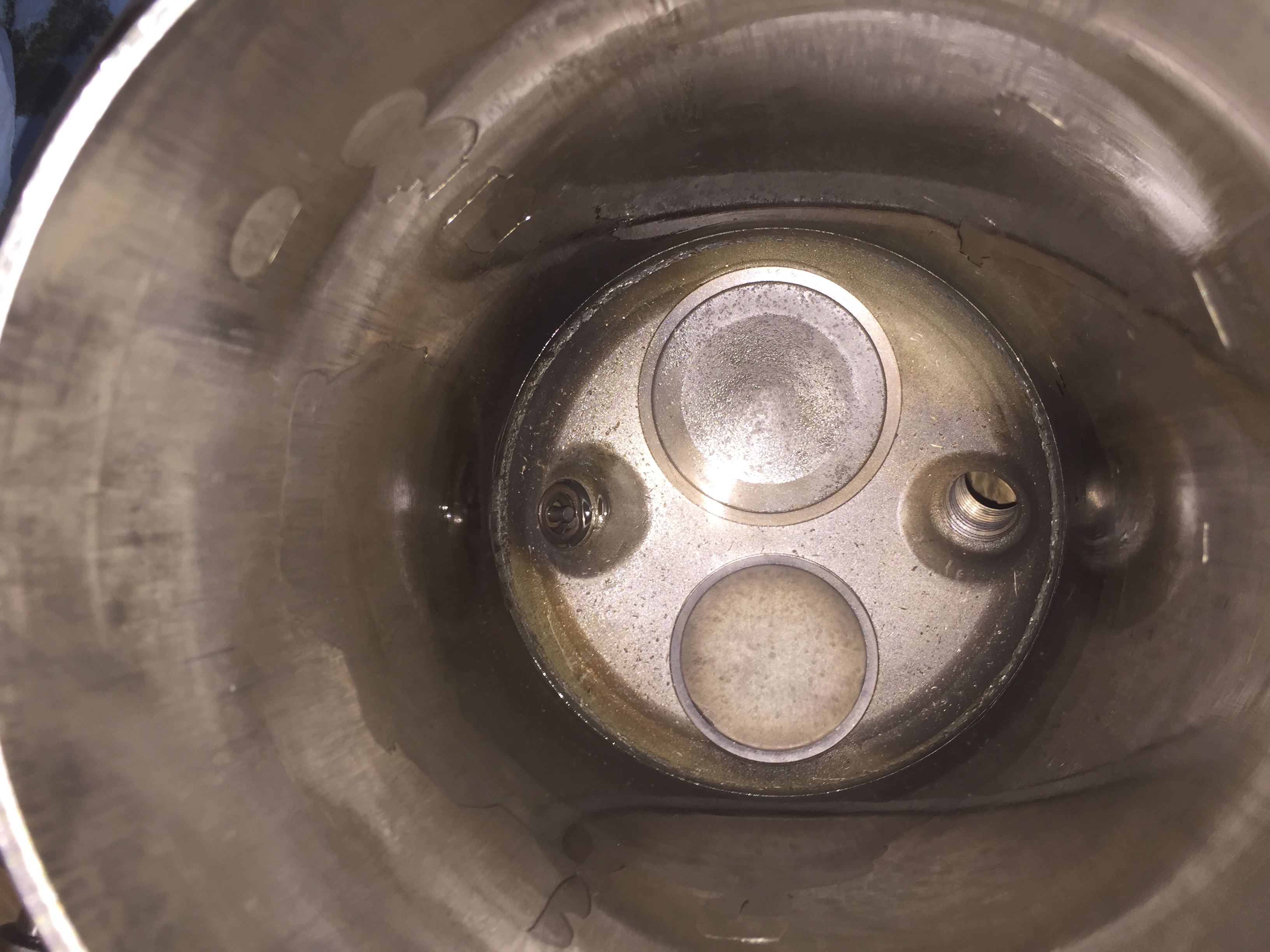
In March 2015, Stephen reports 115 Hrs SNEW ECi Cylinders were
installed, See the whole
BeechTalk thread
on this near in-flight engine disaster
HERE.
An investigation by industry engine gurus is underway.
Here are some additional items to peruse on this topic:
Check out this highly illustrated
FILE .
And this
FILE: 'ECi Cylinder Head Failures on Continental IO 520 & 550 Engines" a
briefing presentation for Dorenda Baker, FAA Director Aircraft Certification
Service.
Page 4 of the above file: "The ECi failure rate is 32 times
higher than Continental’s"
Far be it from me to project any conclusions, it's just the
data that's out there.
|